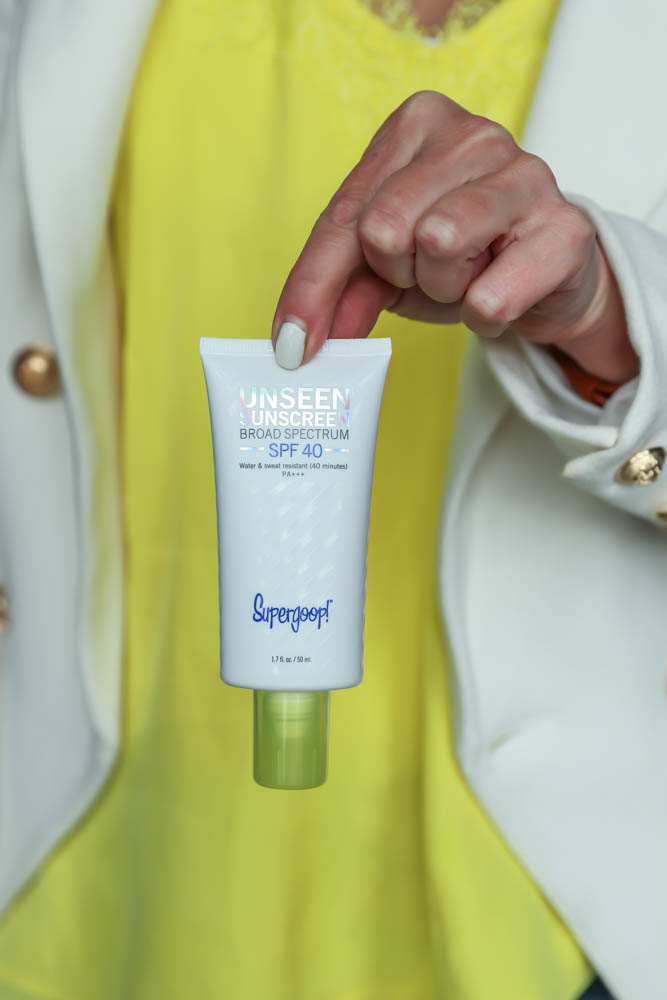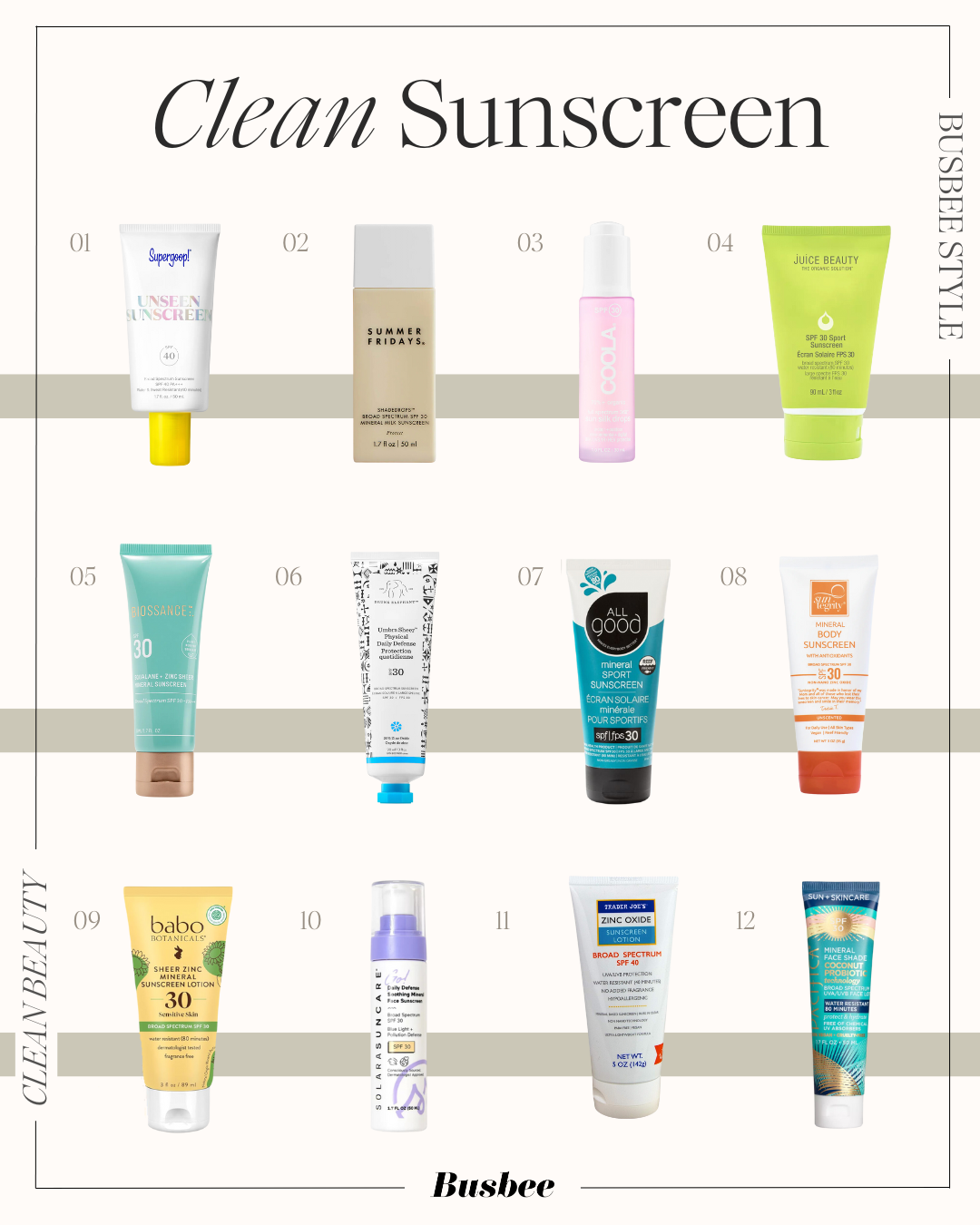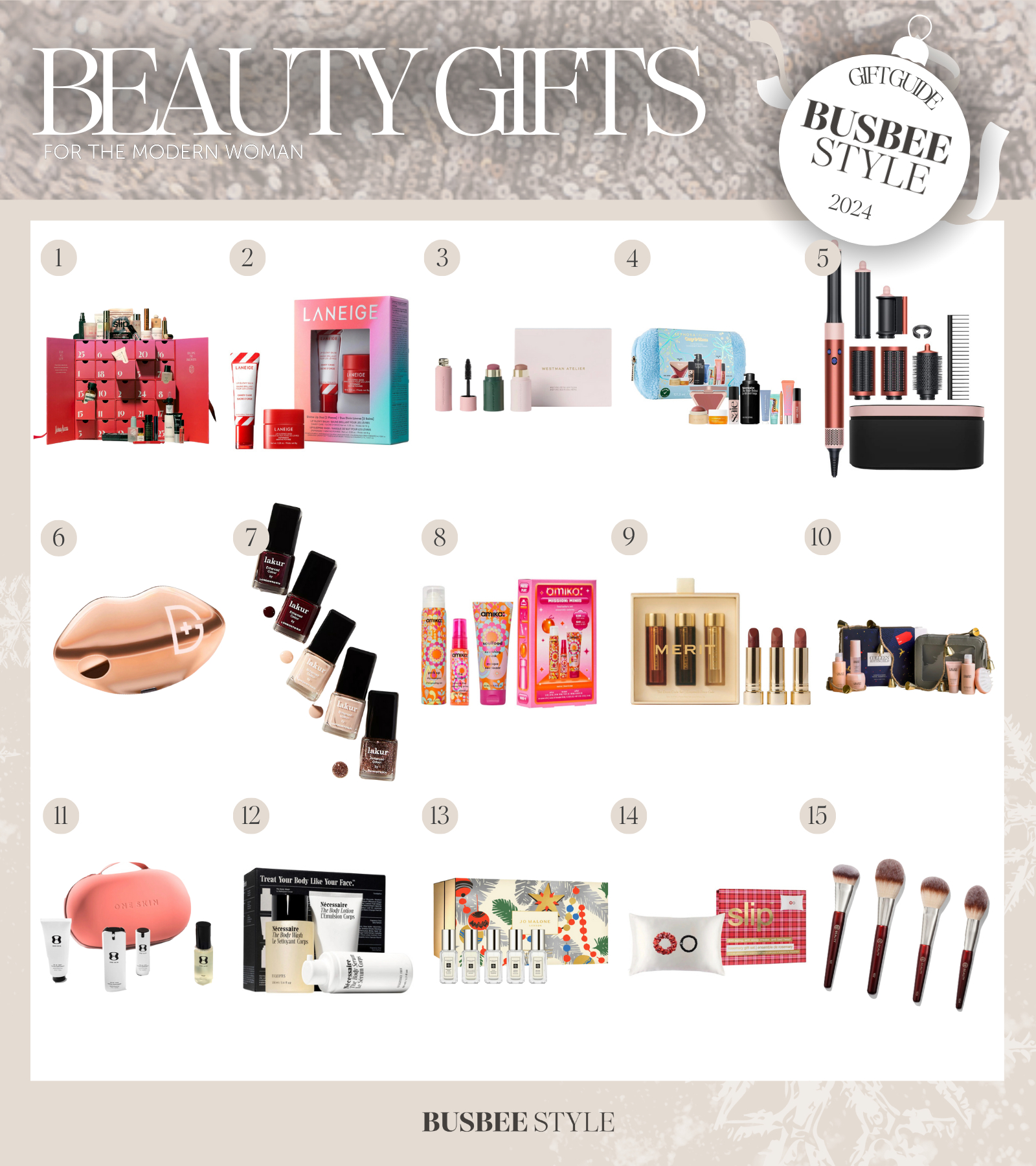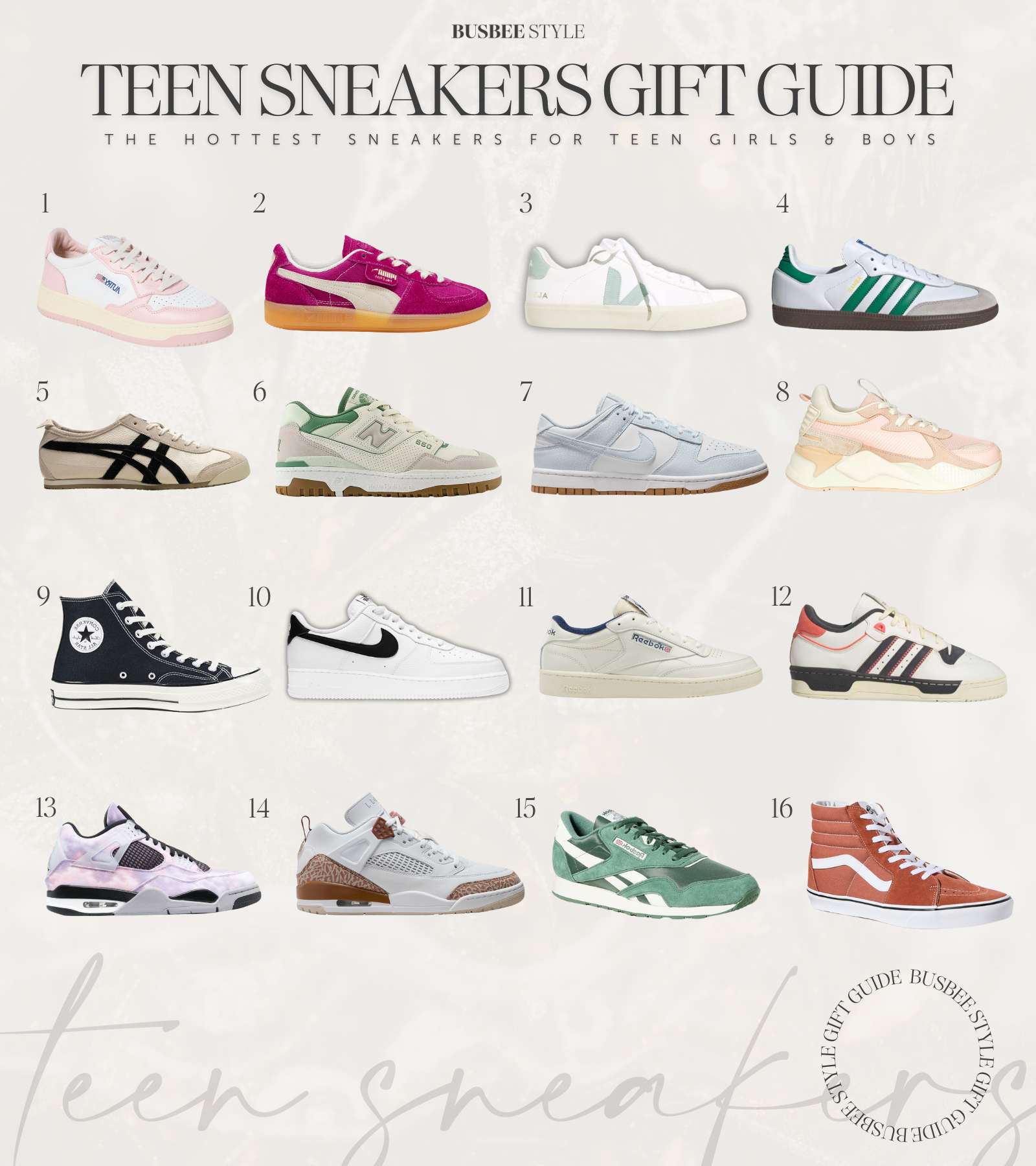With temps rising and people partaking in more outdoor activities, the need for sunscreen is even more important! The best anti-aging tool at your disposal is SPF. Consistently wearing sunscreen, no matter what your age, is SO important! Find more info about UVA vs. UVB, what SPF is, types of sunscreen, and more in my Sunscreen Guide video.
Find the best natural self-tanners to get a safe (sunless) tan here. Plus, all of our clean beauty posts here.

Clean Sunscreens
If you’re new to the clean beauty world, I recommend reading this post first. And the rest of my clean beauty posts here. I cover everything from ingredients to government regulations, to how to find out if a product is clean. The best way to know if something is clean is to use the EWG Skin Deep Database. You can type in a product or copy/paste ingredient lists to get a score from 1 to 10 rating its toxicity (1 being the least toxic). For this post, all of the sunscreens below have a low rating! But remember it’s important to do your own research. You can also find EWG’s Guide To Sunscreens here, including the best sunscreen for the kiddos!

1 | 2 | 3 | 4 | 5 | 6 | 7 | 8 | 9 | 10 | 11 | 12
All of the sunscreens above are great, clean options! They’re all SPF 30 with the exception of #1 and #11, which are both SPF 40. You may have noticed I didn’t include any spray sunscreen. That’s because most clean sunscreen is lotion rather than spray. Spray sunscreen poses an inhalation risk and is therefore not considered completely clean. If you’re set on a spray sunscreen, I’ve heard great things about this spray-on sunscreen.
What’s your favorite sunscreen? Have you tried any of these? Let me know in the comments below!
To get my blog posts delivered directly to your inbox, along with some incredible resources, be sure to sign up for my newsletter here. Thank you for stopping by!






[…] To learn more about what clean beauty actually is, you’ll want to start here. AND, beauty experts agree that sunscreen is a skincare must-have. You can find our favorite clean sunscreens here. […]
[…] Vitamin D is called the “sunshine vitamin.” Our bodies use it to control calcium and support immunity. And Vitamin D deficiency is common year-round. But the chances of people becoming more deficient in winter is higher because we get less exposure to sunlight. Since we’re bundled up and our skin is covered in the winter, you have to be conscious about getting that much-needed Vitamin D! How much sunlight you need depends on where you live, how cloudy it is, and what your skin is like. But given that most winter sunlight is weaker than summer sun, aim for a couple of hours over the course of a week. Midday sun is best because it’s at its strongest point. But no matter when you get outside…every minute counts! There is a difference between supplements and sunlight too. While supplements can help, in some cases, they may cause more harm than good. Depending on the type of Vitamin D and the manufacturing quality, your body may have a difficult time processing the supplements. With sunlight, you can’t “get too much” from a Vitamin D perspective. And your body uses all of what it gets efficiently. Of course, make sure you’re staying sun-safe by wearing a daily SPF. For clean sunscreens we love, check out this post. […]
Great style tips!